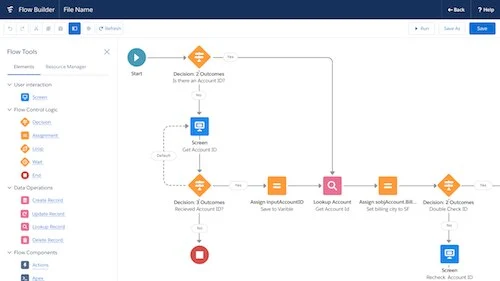In today’s digital era, effective communication plays a vital role in connecting with your audience and driving success in business. Salesforce, a popular Customer Relationship Management (CRM) platform, offers a powerful feature called “Broadcast Messages.” This feature enables users to send important announcements, updates, and notifications to a large group of recipients within their Salesforce org. In this blog post, we will explore the concept of broadcast messages in Salesforce and how they can enhance your communication strategy.
I. What are Broadcast Messages?
1.1 Definition
Broadcast messages in Salesforce refer to the capability of sending targeted messages to multiple users simultaneously within your Salesforce organization. These messages can be used for various purposes, such as sharing critical information, announcing system maintenance, promoting new features, or communicating urgent updates.
1.2 Benefits of Broadcast Messages
- Efficient Communication: Instead of individually reaching out to each user, broadcast messages allow you to communicate with a large group instantly.
- Time-Saving: By sending a single message to multiple recipients, you save time and effort compared to manual communication methods.
- Consistency: Broadcast messages ensure that all recipients receive the same information simultaneously, eliminating discrepancies or misinterpretations.
- Increased Engagement: Broadcasting important announcements grabs users’ attention, leading to higher engagement and participation.
- Customization: Salesforce provides flexibility in targeting specific user segments or departments, tailoring your messages for maximum relevance.
II. How to Use Broadcast Messages in Salesforce
2.1 Enabling Broadcast Messages
Before utilizing the broadcast messages feature, ensure that it is enabled in your Salesforce org. To enable it, follow these steps:
- Log in to your Salesforce account as an administrator.
- Navigate to Setup by clicking on the gear icon in the top-right corner.
- In the Quick Find search bar, type “Broadcast Messages.”
- Select “Broadcast Messages” under the User Interface section.
- Enable the feature by checking the box and save your changes.
2.2 Creating a Broadcast Message
Once enabled, you can start creating and sending broadcast messages. Here’s how:
- Go to the Salesforce homepage and click on the “App Launcher” icon.
- Search for and select “Broadcast Messages” from the available apps.
- Click on the “New Broadcast Message” button.
- Fill in the necessary details, such as the message subject, content, and recipient criteria.
- Optionally, select the target audience by applying filters based on user profiles, roles, or other criteria.
- Preview your message to ensure it appears as intended.
- Click “Send” to broadcast your message to the selected recipients.
2.3 Best Practices for Effective Broadcast Messages
To make the most of broadcast messages, consider the following best practices:
- Clear and Concise Content: Craft messages that are easily understood by primary school students, using simple language and avoiding jargon.
- Urgency and Relevance: Focus on sharing time-sensitive or important information to capture recipients’ attention.
- Call to Action: Include a clear call to action to guide recipients on the desired next steps.
- Visual Enhancements: Use formatting options such as bullet points, headings, and highlighting to make the message visually appealing and scannable.
- Test and Preview: Always review your message before sending it to ensure it appears as intended and contains no errors.
In conclusion, broadcast messages in Salesforce offer a valuable communication tool for reaching a wide audience within your organization. By leveraging this feature effectively, you can streamline your communication efforts, ensure consistent messaging, and engage users more efficiently. Remember to follow best practices and consider the needs of your recipients when crafting your broadcast messages. Start leveraging Salesforce’s broadcast messages today and enhance your organization’s communication strategy.
Remember, effective communication is the key to success!




